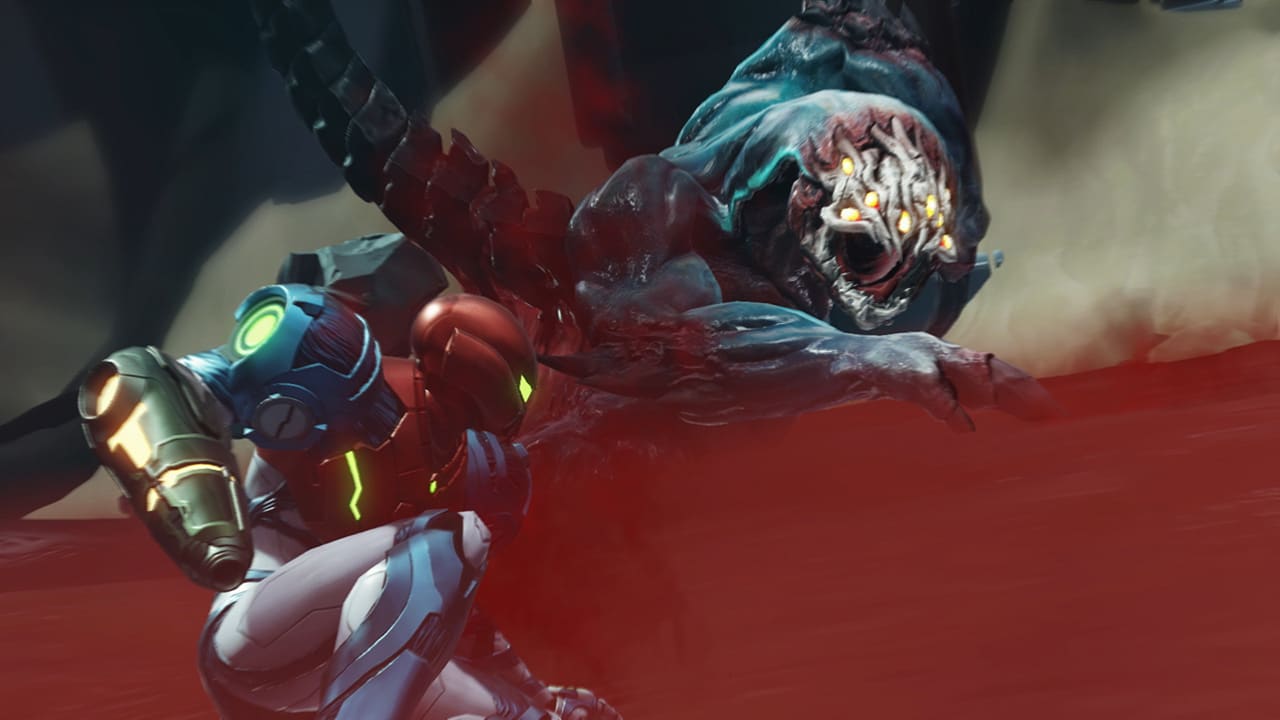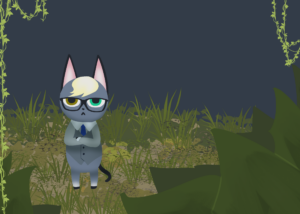Nobody expected Metroid Dread (2021).
The game, a follow-up to the Game Boy cult-classic Metroid Fusion (2002), began its life nearly two decades ago as a title for the Nintendo DS. Once media outlets caught wind of the project in 2005, fans anxiously began awaiting the triumphant return of space-faring bounty hunter Samus Aran. “Metroid Dread is indeed the real deal,” one IGN reporter wrote at the time. “Expect more to show up about the game next year.”
But nothing ever showed. Two thousand and six passed without news, then 2007 much the same. According to the game’s producer, Yoshio Sakamoto, Metroid Dread was canceled, restarted, and canceled again in the 2000s and early 2010s. That kind of turbulence usually spells disaster—when a video game becomes trapped in development limbo, chances are it doesn’t escape. Without an official announcement, Metroid Dread was lost media, its name relegated to listicles and obscure trivia.
Then, 19 years later, gaming’s favorite cannon-wielding warrior reappeared. Released mere months after its reveal last summer, the fact that Metroid Dread materialized at all is a shock. That it was nominated for Game of the Year, will outsell every prior entry in the 36-year-old Metroid franchise, and is among my favorite games of 2021—that is a miracle.
Dread, like its predecessors, sees Samus navigate a mysterious alien underworld. Tasked with hunting down the remnants of a galaxy-threatening parasite, the bounty hunter lands her spacecraft in the ruined Chozo kingdom on Planet ZDR. Shortly thereafter, an unknown assailant ambushes her, separating Samus from her gunship and scattering her equipment across the world. Players guide our hero as she shoots lasers, explores the kingdom, and tries to escape ZDR alive.
In traditional Metroid style, the task is easier said than done. Ghastly extraterrestrial beasts guard Samus’ lost powers—ammunition, gadgets, and upgrades for her suit—after they were dispersed across ZDR’s ant-farm-like map. Locked doors and destructible barriers challenge players to build a mental map, making navigation just as much of a foe as the creatures who patrol the planet’s depths.
Though developer MercurySteam stays faithful to the Metroid formula—that is, finding items in a maze—Dread’s success is not solely attributable to series convention. Game design has changed dramatically since 2002, and Dread thrives by embracing how the genre has grown in its absence.
For instance, while exploring is one of the series’ main draws, older Metroid titles are often criticized for being too obtuse. Sometimes getting lost is a fun challenge, other times it’s just annoying. Dread’s world sprawls just as in past entries, but clever design tricks like one-way passages and color-coded teleporters mean players get lost less often. Hints embedded in Samus’ map are helpful without trivializing the task of discovering hidden items. Players may only save and quit at specific map locations, but frequent checkpoints make it rarer than in previous Metroid games to lose progress. Altogether, Dread modernizes navigation without taking away from what made past Metroid worlds so entrancing to explore.
No innovation is without its drawbacks, however. Though Samus can seamlessly leap and slide her way through ZDR’s tunnels, learning how is difficult. As the player accrues more abilities, controlling Samus becomes increasingly complex: She can swing with a grappling hook, turn invisible, morph into a ball, dash horizontally, climb vertically, and eventually even fly. That’s a lot of maneuvers to keep track of, let alone execute.
In most scenarios, the controls are manageable with a little bit of practice. Mid-combat, however, the range of movement options can feel like an encumbrance. I frequently found myself mixing up Samus’ “free-aim” and “missile” modes because simply moving occupied more attention than the giant screeching alien on screen. Familiarity with Samus’ controls comes with time, but if Dread is a player’s first Metroid game, it may take a few hours to feel comfortable navigating the character.
This difficulty is particularly apparent when Samus is facing off against the game’s new baddies, the EMMI. The Metroid series has always worn its Alien (1979) influences on its sleeve, but Dread is unique in how it leans into its inspiration’s scariness. The EMMI are near-invulnerable robots that hunt down Samus in some regions of ZDR. Like Ridley Scott’s Xenomorphs, they prowl through ducts and hallways, forcing Samus to stealthily slip away or run for her life. These sequences are thrilling at first, but especially early on, the precision they require of players can be unforgiving. Considering how similar each robot encounter ultimately is, the challenge they present eventually grows stale. By my tenth attempt at evading an EMMI, I kind of got the point.
Luckily, there are plenty of boss encounters beyond the EMMI. Contrasting the mildly repetitive robots, ZDR’s diverse menagerie of adversaries deliver some of Dread’s most memorable moments. I loved the genuine surprise of being ambushed by spear-wielding Chozo warriors, and nothing made Samus seem cooler than watching her blast the giant lizard Kraid into a magma-filled grave. These encounters are tough, but their difficulty also makes learning and overcoming them all the more satisfying.
Besides being fun to fight, these bosses also showcase another one of Dread’s strengths: animation. The game is stylish to begin with—Samus’ power suit pops against a muted background, making everything from simple gestures to stunning action poses easily readable on the Nintendo Switch’s small handheld screen. Most boss fights at some point require Samus to parry her enemy’s attack, at which point she and the foe enter into a beautifully choreographed cinematic sequence. Samus flips, dodging her opponent’s strikes, while the player fires lasers and explosives to their heart’s content. Trust me, it’s good stuff.
Samus’ battles are an apt microcosm for the whole of Metroid Dread: gorgeously presented, refreshingly creative, and unapologetically challenging. Though its difficulty can make the experience unapproachable, Dread’s innovations try to address those issues—albeit with only limited success. Appreciably, the game’s developers have taken this criticism in stride. In a free update released on Feb. 9, the game received an easier ‘rookie’ mode (as well as an even harder ‘dread’ mode) to help new players find their footing on Planet ZDR. The change doesn’t necessarily make the controls less complex, but it does make mistakes less costly when they inevitably happen.
Given its tumultuous history, Metroid Dread is an impressive feat. The game fulfills what Sakomoto set out to do all those years ago: create a richly atmospheric game that brought the Metroid story to a satisfying conclusion. There’s little doubt in my mind that, even after 19 years, Samus’ latest adventure was well worth the wait.






Metroid Dread delivers an intense and immersive experience with its stunning visuals, gripping storyline, and challenging gameplay. It showcases the true potential of the Switch console and captivates players from start to finish. As a passionate lover of the WoW game, I know secrets how wowboost a game and save a time, but I couldn’t agree more with your sentiment about Metroid Dread. It’s truly an exceptional addition to the Switch library.